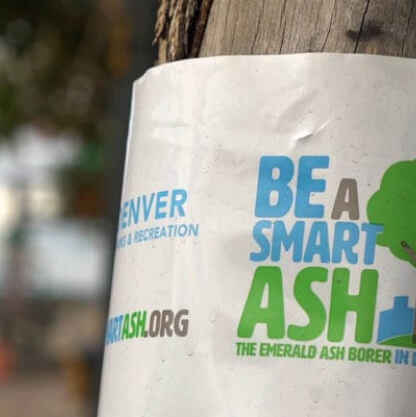Top 5 Takeaways: How to Be an Anti-Racist Organization, Pt. 4
For many organizations, including GroundFloor Media and CenterTable, this year emphasized the importance of acknowledging privilege and putting in real work to combat racism and inequity. For an organization to remain stagnant after such a cultural jolt would be the equivalent of saying, “I’m not racist,” a defensive sigh that offers no room for action. Instead, a genuine declaration of anti-racism – the true antonym of racism – in the form of concerted efforts for organizational change is where concerned companies need to start.
With that in mind, and as a member of the agencies’ diversity, equity and inclusion (DEI) team, I recently attended the fourth installment of the How to Be an Anti-Racist Organization virtual discussion series, presented by Denver Arts & Venues. Each month, Tariana Navas-Nieves, Director of Cultural Affairs at Denver Arts & Venues, and Nita Mosby Tyler, Chief Catalyst at The Equity Project LLC, offer actionable steps for organizations that want to commit to anti-racism work. In the session in which I participated, they specifically spoke about how to build organizational trust, the value of assessment in equity work and the potential drawbacks of diversity training. I’ve highlighted my top five takeaways below, as well as links to recordings of their previous discussions.
- Access: It sounds like a no-brainer to make a talk about equity as accessible as possible, but Tariana, Nita and their team were extremely mindful about this. They were deliberate about offering frequently overlooked groups, like people with hearing and vision differences, an equally valuable experience. ASL interpreters worked alongside the presenters throughout the discussion, and Tariana and Nita began the talk by describing how they look for those with vision differences. They continued by sharing their preferred pronouns, racial and cultural identifiers, followed by acknowledging the ancestral inhabitants of the land we live on and an invitation to participants to share their own info with the group in the chat. They also offered options for Spanish translations of the talk.
- Language is always changing: Throughout the virtual discussion, people chimed in on the chat about terms mostly used to describe racial groups, like BIPOC (Black, Indigenous and People of Color). The speakers pointed out that language is constantly changing, especially around difficult topics that are systemically tied into our vocabulary. Terms that were ok to use even five years ago might be inappropriate now. The important thing is to maintain a healthy conversation and remain open. As language shifts, discussion is key.
- Anti-racism and equity work moves at the speed of trust: Within organizations, we can build trust by sharing power and decision-making. Giving permission to be vulnerable and fail are also important components to trust-building. Nita offered the following metaphor: equity work is like exercise and trust is like stretching. You need to stretch and build trust before you can begin building equity. Without it, something or someone is likely to get hurt.
- Assessing progress is vital: To continue building equity within your organization, setting goals and assessing your progress is essential. To set goals, you must identify where you are:
- What does your staff and leadership look like?
- What is and what has been your relationship with BIPOC-led organizations? Are these relationships authentic?
- Who on your team is committed to DEI work?
- Why are you engaging in this work? Is it just opportunistic?
Once you answer these questions, you can set actionable goals. From there, assessing progress provides a roadmap for the future.
- Diversity trainings are fine, but…: Data shows that the effects of diversity trainings might not last long. Plus, if they aren’t conducted thoughtfully, people can feel attacked. Open dialogue amongst a team builds trust and is more helpful than being talked at. The real key is to make the training an opportunity to think about how to improve the organization, rather than checking a compliance box.
If you or your organization are working to build a DEI plan or want to be more engaged in anti-racism work, I highly recommend reviewing Nita and Tariana’s presentations. Remember that this is hard work, and it is essential to moving forward.
- How to Be an Anti-Racist Organization Part 1
- How to Be an Anti-Racist Organization Part 2
- How to Be an Anti-Racist Organization Part 3
- How to Be an Anti-Racist Organization Part 4
If your company is interested in standing together to create a more equitable Colorado, you could consider committing to the Colorado Companies Uniting Against Racism pledge. Many organizations including the Denver Metro Chamber of Commerce, Prosper CO, Downtown Denver Partnership, B:CIVIC and Inclusive Economy, are providing additional resources to guide DEI planning efforts for businesses in the coming months.



